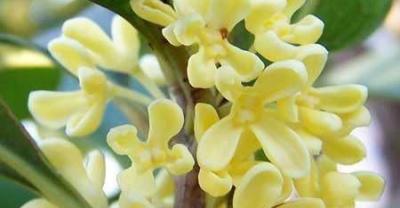Do balcony vegetables need to be fertilized? Water and fertilizer management skills of balcony vegetables
The price of chives and coriander is rising day by day this year, and there are places where chives and cilantro are ridiculously expensive, so in order to save money or decorate, you might as well grow some vegetables on the balcony while raising flowers. The vegetables grown by yourself taste different, and they always feel more delicious and fragrant than those bought in the vegetable market or supermarket, which is probably the satisfaction of self-made food and clothing.

1. Watering skills of small chives
On their own balcony, plant a pot of small chives, not only beautiful, as a green potted plant to watch, but also can eat, as stir-frying ingredients, it is a lot of fun.
Small chives should keep the soil moist after sowing until they grow leaves.
Small chives grow to about 15 centimeters, to ensure sufficient water, in order to promote the rapid growth of chives.
In the middle stage of growth, the amount of water can be reduced appropriately.
two。 Fertilization skills of chives
Small chives can be fertilized every ten days. Fertilizer can choose ordinary compound fertilizer, or flower fertilizer.
* * the economical fertilizer is rice washing water. Amoy rice water is not only environmentally friendly, but also provides water and nutrients, so it is very suitable to be used as fertilizer for chives.
Vegetables grown on the balcony are suitable for growing in sandy soil. If I ask you, what are the necessary elements for plant growth? I'm sure it won't bother you. They include: moisture, sunlight, temperature, soil, nutrient elements, air and so on. So if I ask you again, do you know which vegetables are suitable for growing in sand, I think you will be a little at a loss if you are not a professional. Today, the Chinese vegetable Garden Network will introduce to you the vegetables that are suitable for growing in sand. Soil can be divided into loam, clay and sand according to its soil quality. Most of our family balcony vegetables choose loam, loam fertility and tillability are better in these three categories, and the contradiction between water and air is soft, permeable and ventilated, the supply of fertility is moderate, and it can be cultivated for a long time. Drought and waterlogging resistance, strong stress resistance, wide range of suitable planting, is the most ideal agricultural soil. Clay, viscous and heavy, is not conducive to farming, the gap between the soil is small, the permeability of the soil is poor, its retention of water and fertilizer is strong, the fertility in the soil is not easy to lose, but the nutrients are less, the decomposition of organic matter is relatively slow, and the decomposition ability of the harvested and abandoned plants is poor, because of its inefficient decomposition performance, the effect of the crops planted on this kind of soil is not obvious, and the fertilizer is absorbed slowly. However, once it is absorbed, the loss of nutrients is relatively small, and the fertility stamina is large, which will cause a waste of fertilizer. Sand, which is just contrary to the characteristics of clay, the clay content in sand is generally less than 30%, while the content of sand is generally higher than 50%. Therefore, the gap between soil particles is large, which also leads to its poor water retention and drought tolerance. But at the same time, its permeability is relatively good, so it is convenient for farming. Compared with clay, sandy soil decomposes organic matter faster and takes effect quickly after fertilization, but the loss of nutrients is also more serious, so it should be less and less frequently when fertilizing, so that crops can not go crazy because of more than one fertilization, and lack of fertility in the later stage. The above is a brief introduction to the three kinds of soil, after understanding, let's take a look at these characteristics of sand, which vegetables are more suitable to grow? China vegetable Garden Network points out that sandy soil is suitable for growing tuber crops that grow underground, such as potatoes, ginger, carrots, onions, sweet potatoes, peanuts, sweet potatoes, taro and so on. For more information about growing vegetables on the balcony, you are welcome to continue to lock on the balcony growing channel of the Chinese vegetable Garden Network. Teach you to grow taro vegetables on the balcony.
Taro is one of the earliest potted vegetables planted on the balcony, because taro can be planted not only as a vegetable but also as an ornamental plant. Its shape is similar to that of sea taro and dripping Guanyin. It is a beautiful scenery at home.
Taro management is extensive, soil, water, fertilizer and light requirements are not strict, almost no diseases and insect pests, long viewing time, edible parts and time is also very long, very suitable for friends who want to grow vegetables on the balcony to try.
Taros are edible taro bought in the supermarket, using self-made potted soil. After planting, they are not fertilized. They are only exposed to scattered light for one or two hours a day, and sometimes they are placed in the living room for a few days before they go out to bask in the sun. But there can be no shortage of water. Water should be watered once or twice a day, and water should be sprayed on and around the leaves from time to time. The first pot of taro was planted shortly after the Beginning of Spring, with a blue porcelain basin on a white background, with holes in the bottom, 30 centimeters in diameter and 26 centimeters high.
Put the potted soil on 2gambit 3, put the taro buds up and water the covered soil, keep it moist after emergence and grow gratifying. The focus of late management is watering, because there are holes in the bottom, the amount of water each time is limited, so it is necessary to water twice a day in the middle of summer.
- Prev

Planting and Edible methods of Rosemary
Rosemary alias the dew of the ocean. Evergreen shrub with erect, gray-green, narrowly pointed leaves that emit pine fragrance and have been regarded as memory enhancers since ancient times.
- Next

Cherry cultivation techniques and management: cherry cultivation techniques, the best time for cherry cultivation
As the saying goes, cherries are delicious and trees are hard to plant. The difficulty of planting trees is mainly determined by the characteristics of cherry roots. Cherry root is very shallow, so it is afraid of drought; root respiration intensity.
Related
- Fuxing push coffee new agricultural production and marketing class: lack of small-scale processing plants
- Jujube rice field leisure farm deep ploughing Yilan for five years to create a space for organic food and play
- Nongyu Farm-A trial of organic papaya for brave women with advanced technology
- Four points for attention in the prevention and control of diseases and insect pests of edible fungi
- How to add nutrient solution to Edible Fungi
- Is there any good way to control edible fungus mites?
- Open Inoculation Technology of Edible Fungi
- Is there any clever way to use fertilizer for edible fungus in winter?
- What agents are used to kill the pathogens of edible fungi in the mushroom shed?
- Rapid drying of Edible Fungi

